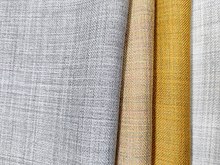
Piece goods were the textile materials sold in cut pieces as per the buyer's specification. The piece goods were either cut from a fabric roll or produced with a certain length, also called yard goods. Various textiles such as cotton, wool, silk, etc., were traded in terms of piece goods. The prices were determined as per the fabric quality.[1][2][3][4][5]
John Forbes Watson classified Indian textiles into two types: piece goods and loom goods. Piece goods are materials that must be cut and sewn before they can be used, whereas loom goods, such as scarves and Saris, are ready to use after leaving the loom.[6]
- ^ "Definition of PIECE GOODS". www.merriam-webster.com. Retrieved 2020-12-21.
- ^ Wingate, Isabel Barnum (1979). Fairchild's dictionary of textiles. Internet Archive. New York : Fairchild Publications. p. 455. ISBN 978-0-87005-198-2.
- ^ Chaudhury, Sushil (2020-03-10). Spinning Yarns: Bengal Textile Industry in the Backdrop of John Taylor's Report on 'Dacca Cloth Production' (1801). Routledge. ISBN 978-1-000-07920-3.
- ^ Blanco, A. E. (2019-11-29). Piece Goods Manual: Fabrics described; textile, knit goods, weaving terms, etc., explained; with notes on the classification of samples. Good Press.
- ^ Office, United States Patent (1925). Annual Report of the Commissioner of Patents. U.S. Government Printing Office. p. 1686.
- ^ A Monograph on Silk Fabrics Produced in the Northwestern Provinces and Oudh. Printed at the N.-W. Provinces and Oudh Government Press. 1900. p. 70.
